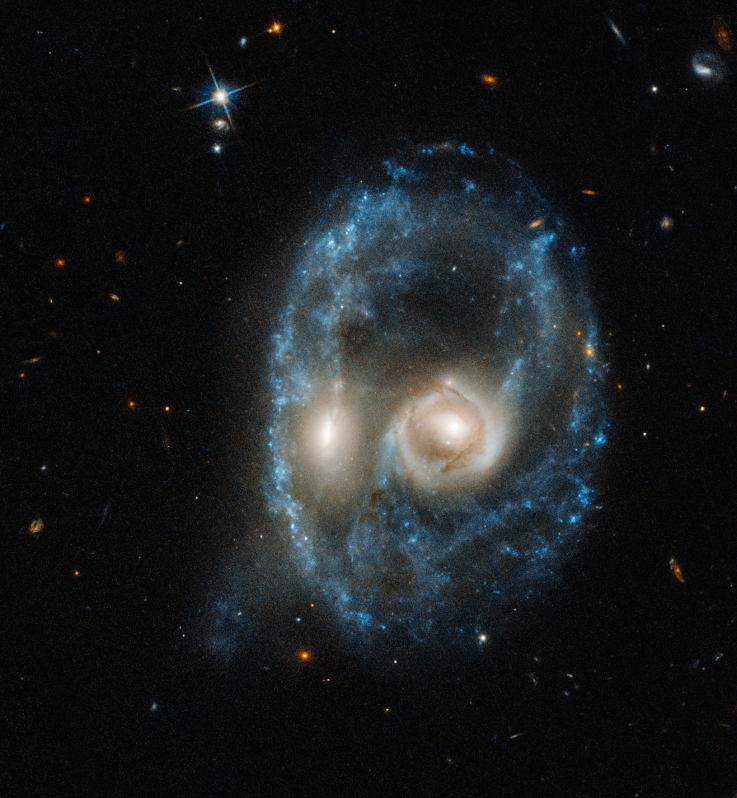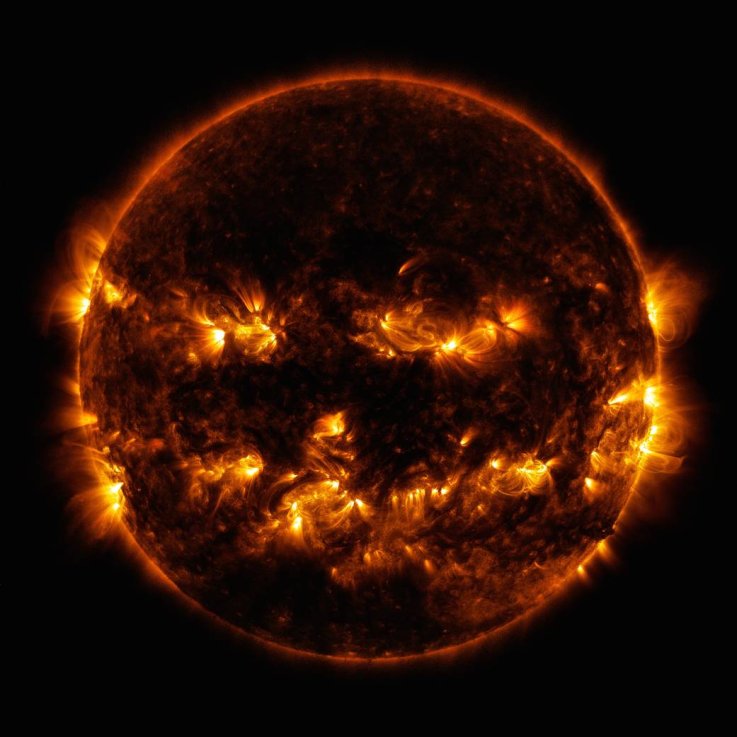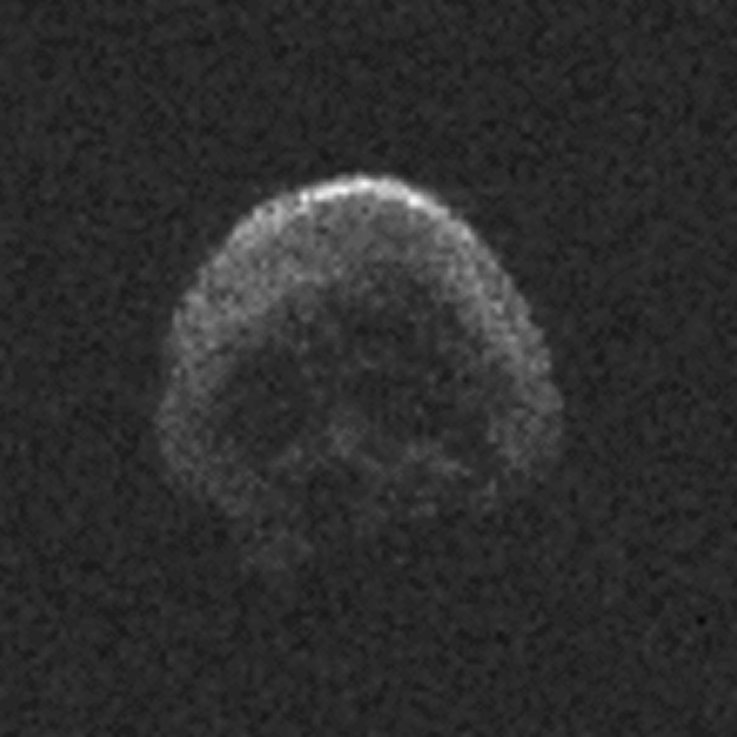An image of a "ghostly face" produced from a "titanic" collision of two massive galaxies just over 700 million light years from Earth has been released by NASA and the European Space Agency (ESA) in the run up to Halloween.
The positions of the galaxies create the illusion that "an uncanny pair of glowing eyes glares menacingly in our direction," with a ring of young stars producing the "outline of the face," a statement from the Hubble Space telescope said.
The image was taken on June 19 as part of a program that takes pictures of the universe when there are gaps in the telescope's schedule. This "snapshot" program is used to look at interacting galaxies—by doing this, scientists will be able to compile a sample that can be used to work out how galaxies grow by merging with one another over time.
The two colliding galaxies are part of a system called Arp-Madore 2026-424—or AM 2026-424 for short. The galaxies are roughly equal size and are undergoing a head-on "titanic" collision.

Each "eye" is the core of a galaxy. The "nose and mouth" are made up of clumps of newly forming stars, while the "face" is made up of young blue stars.
"The side-by-side juxtaposition of the two central bulges of stars from both galaxies...is unusual," the Hubble statement said. "Because the bulges that make the eyes appear to be the same size, it is evidence that two galaxies of nearly equal proportions were involved in the crash, rather than more common collisions where small galaxies are gobbled up by their larger neighbors."
Because of the collision, the structure of this system became "ring" shaped. "The crash pulled and stretched the galaxies' disks of gas, dust and stars outward," the statement said. "This action formed the ring of intense star formation that shapes the nose and face." The ring shape is only expected to last for around 100 million years, and the galaxies will likely merge completely in about 1 to 2 billion years.
The team that captured the image was led by Julianne Dalcanton, an astronomer at the University of Washington. They now plan to use Hubble snapshot program to look at other interacting galaxies.
This is not the first spooky space image. In 2014, NASA's Solar Dynamics Observatory released an image of the Sun where it resembled a jack-o'-lantern. The image, taken in 2014, was the result of active regions on the Sun produced by magnetic fields above the corona.

In 2015, NASA's Jet Propulsion Observatory captured an image of a "dead comet" that looked like a skull. The comet, known as 2015 TB145, was due to flyby Earth on October 31.

https://www.newsweek.com/hubble-ghost-face-galaxy-merging-1468358
2019-10-29 11:46:44Z
52780421029080
Tidak ada komentar:
Posting Komentar